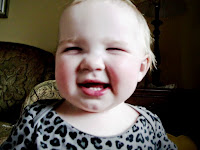This past weekend was my sister-in-laws birthday. In the past few months she has started sewing and I wanted to get her some of my very favourite pins. It took me years to finally treat myself to some quality pins. My favourite pins are these yellow flower head pins. They lay flat which is perfect for piecing quilt blocks together and helps maintain accuracy.
I didn't want to just give her a box of pins though, especially because she has little ones and pins are hard to keep track of. I decided to make her a pin cushion and I was definitely limited on time -- the party was in three hours and I have two kids myself to keep track of.

I did a quick google search and saw these cute hedge hog pin cushions! I knew there were some
features that were important to me in a pin cushion:
1. It needs to not roll away (why are tomato pin cushions a thing? They roll off your table!)
2. It needs to be functional (hold A LOT of pins)
3. It needs to be small enough to sit nicely in the throat of my machine
4. It needs to be soft enough for the pins to slide in without trouble. (I used corduroy once for a pin cushion... it didn't work very well)
The best part of my pin cushion? I saved my pieces and made a free pattern for you!
Open and print him out here:
FREE PIN CUSHION PATTERN
Pattern Instructions and Materials
Materials
4 small half beads (or any small plastic object for his feet)
1 small pink bead for nose (I used a small plastic pearl)
Small pieces of burlap
Small piece of brown fabric for his back
Black thread to sew on eyes
Very small amount of pink for inside of his ears
Pins of course! (They make the spikes on your hedge hog)
A handful of batting -- the fluffy kind designed to fill teddy bears)
Instructions
Cut out all your fabric shapes.
-2 burlap ear shapes, 2 pink burlap ear shapes.
-2 burlap face triangles
-1 burlap belly shape
-2 fabric back pieces
Construction:
To make ears - Sew (right sides together) one burlap ear shape to one pink ear shape - sew on dotted line of pattern leaving bottom open, turn right side out, repeat for two ears
To make face - Sew both triangle face shapes (right sides together) then turn right side out
To make back - take both back fabric pieces and sew along the line (right side together) then turn right side out
The next step is to sew the face to the back - right sides together. Leave a small opening (about 1 cm) opening on either sides of the center seam. Insert the ears so that the raw edge will be contained in your seam. Then sew the head to the back again - this time it will catch the raw edges of the ears. When you flip right side out, your ears should be sew into place. The ears will need to bunch a bit to fit in the holes - this gives them a more real looking ear.

To create his body, sew the belly to the back and face - right sides together. Leave an inch opening to be able to stuff his body. Flip him right side out through the opening, then full his body (fairly full) with batting. Hand stitch to close the opening.
The last step is to embellish your little hedge hog. I added the plastic on the bottom to help him stay up without rolling away. I simply glue gunned on the four little feet where it looked appropriate. I then took some black thread and whip- stitched on some black eyes. The last piece - the little nose just got tacked on with some white thread, but you could also glue gun that little piece
.
And there you have it - stick your favourite pins and you have your new sewing buddy.
Why not make a family of hedge hogs and put your different pins in different cushions? If I was more organized and lived in a world where my kids got their own snacks by them self .. I would make a hedge hog family! For now, one little guy made a great birthday gift!


























































